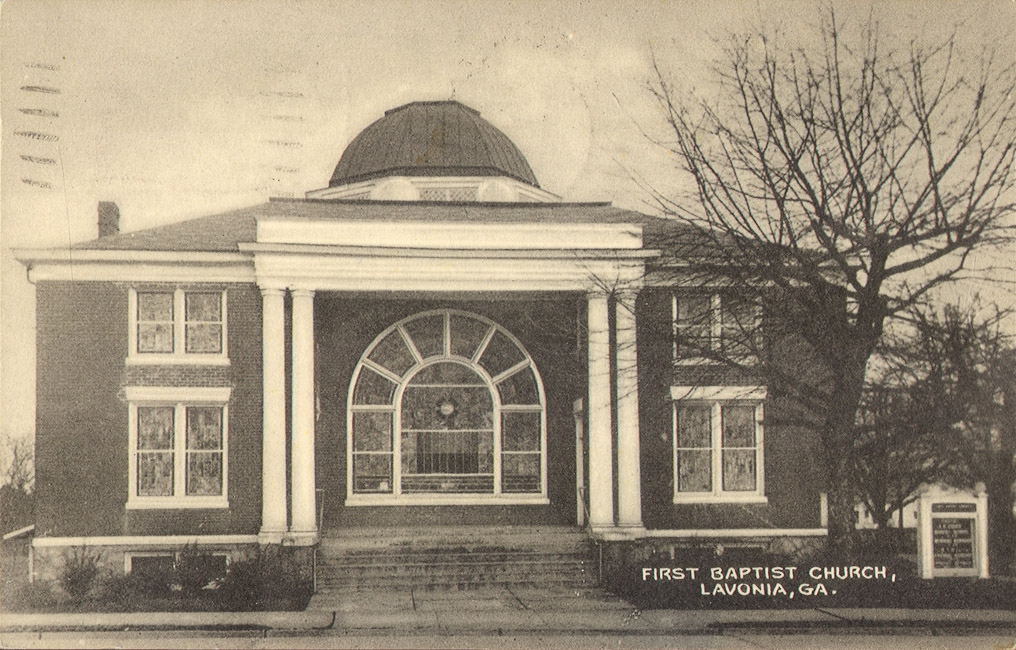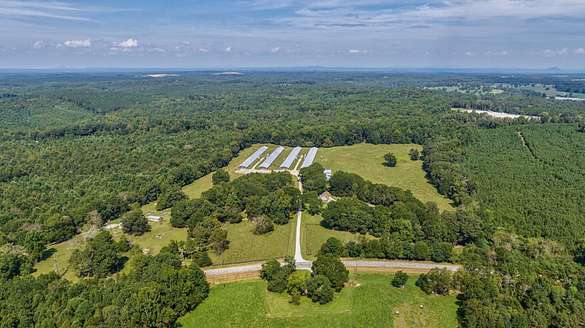
Table of Contents
Introduction
Lavonia, Georgia, a quaint town nestled in the northeastern part of the state, boasts a rich tapestry of history, much of which is woven through its historic churches. These sacred structures have not only served as places of worship but have also been central to the community’s social, cultural, and architectural development. This article delves into the stories of Lavonia’s historic churches, exploring their origins, architectural styles, and the pivotal roles they have played in shaping the town’s identity.
The Genesis of Lavonia’s Religious Foundations

Early Settlement and Religious Gatherings
The roots of organized religion in Lavonia trace back to the late 19th century, coinciding with the town’s establishment in 1878. As settlers moved into the area, they brought with them religious fervor and a desire to build places of worship that reflected their faith and aspirations.
The Formation of First United Methodist Church
One of the earliest congregations in Lavonia was the First United Methodist Church. Organized between 1878 and 1880, the church initially held services in the Joe Vickery Store before constructing its first permanent building. The current structure, completed in 1948, stands as a testament to the community’s commitment to faith and continuity. Designed by architect Roy E. Hitchcock, known for his work on several University of Georgia facilities, the church’s design reflects a blend of traditional and modern architectural elements .
The Establishment of Pleasant Hill Baptist Church
Another cornerstone of Lavonia’s religious landscape is Pleasant Hill Baptist Church. Established on October 18, 1872, the church has undergone several transformations to meet the needs of its growing congregation. The current sanctuary, dedicated in 2012, replaced the original structure built in 1932. The church’s history is a testament to the enduring spirit of its members and their dedication to preserving their heritage while embracing growth .
Architectural Significance of Lavonia’s Historic Churches

First United Methodist Church
The First United Methodist Church’s 1948 building showcases a blend of traditional and modern architectural styles. Its design emphasizes functionality and community, with a layout that fosters fellowship and worship. The use of local materials and craftsmanship reflects the town’s commitment to preserving its heritage while accommodating contemporary needs.
Pleasant Hill Baptist Church
The Pleasant Hill Baptist Church’s current sanctuary, completed in 2012, incorporates elements from its earlier structures, maintaining a connection to its historical roots. The architecture balances tradition with modernity, featuring spacious interiors designed to accommodate a growing congregation and community activities.
Community Impact and Cultural Significance

Social and Cultural Hubs
Beyond their religious functions, Lavonia’s historic churches have served as social and cultural hubs for the community. They have hosted a myriad of events, from weddings and funerals to community dinners and youth programs. These gatherings have fostered a sense of unity and belonging among Lavonia’s residents.
Educational Contributions
Many of Lavonia’s churches have played pivotal roles in education. Sunday schools, Bible studies, and youth groups have provided not only religious instruction but also life skills and mentorship. The churches’ commitment to education has had a lasting impact on the community, shaping generations of individuals who have gone on to contribute to the town’s development.
Architectural Landmarks
The churches’ distinctive architectural styles have contributed to Lavonia’s aesthetic appeal. Structures like the First United Methodist Church and Pleasant Hill Baptist Church are not only places of worship but also landmarks that define the town’s skyline. Their preservation ensures that future generations can appreciate the architectural heritage that has shaped Lavonia’s identity.
Preservation Efforts and Challenges
Historic Preservation Initiatives
Recognizing the importance of preserving its architectural heritage, Lavonia has undertaken various initiatives to protect its historic churches. The town’s inclusion in the National Register of Historic Places has provided a framework for conservation efforts, ensuring that these structures receive the attention and resources needed for their upkeep.
Community Involvement
The preservation of Lavonia’s historic churches has been a community-driven effort. Congregations, local historians, and residents have collaborated to maintain these structures, organizing fundraisers, educational programs, and volunteer workdays. Their collective efforts highlight the community’s dedication to preserving its history for future generations.
Challenges Faced
Despite these efforts, preserving historic churches presents several challenges. Aging infrastructure, limited funding, and the need to balance modernization with preservation can strain resources. However, the community’s commitment to overcoming these obstacles underscores the importance placed on maintaining these cultural landmarks.
Read Also: Discovering the Big Historic Downtown Murals of Lavonia, Georgia: A Walk Through Art and History
The Future of Lavonia’s Historic Churches
Embracing Technology
To ensure the continued relevance of its historic churches, Lavonia is exploring ways to integrate technology into their operations. This includes live-streaming services, digitizing records, and utilizing social media to engage with a broader audience. These initiatives aim to bridge the gap between tradition and modernity, ensuring that the churches remain vibrant centers of community life.
Educational Programs
Educational programs focusing on the history and significance of Lavonia’s historic churches are being developed. These programs aim to educate both residents and visitors about the architectural and cultural heritage embodied in these structures, fostering a deeper appreciation and commitment to their preservation.
Collaborative Efforts
Future preservation efforts will involve collaboration between churches, local government, and preservation organizations. By pooling resources and expertise, these stakeholders can address the challenges of maintaining historic churches while ensuring they continue to serve the community’s needs.
Conclusion
Lavonia‘s historic churches are more than just buildings; they are repositories of the town’s history, culture, and community spirit. Their architectural grandeur and the stories they hold within their walls are integral to understanding Lavonia’s past and shaping its future. As the town continues to grow and evolve, the preservation of these sacred structures will ensure that the legacy of faith, community, and heritage endures for generations to come.


